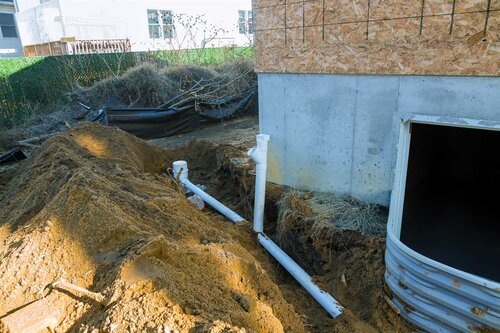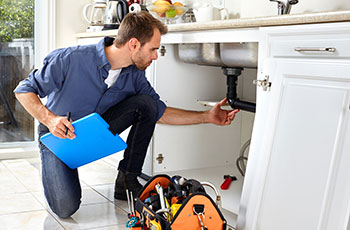Untangling the Core Concepts of Home Plumbing: A Beginner's Overview
Untangling the Core Concepts of Home Plumbing: A Beginner's Overview
Blog Article
Listed here below you can find some reliable insight regarding What to Know About Plumbing: Basics, Tips, and Insights.

Plumbing is an important element of any type of home, responsible for supplying clean water for alcohol consumption, food preparation, and showering, in addition to eliminating wastewater securely. Understanding the essentials of home plumbing is necessary for each homeowner to guarantee proper upkeep, troubleshooting, and, if required, repair services. In this novice's guide, we'll cover the fundamental ideas of home plumbing to aid you end up being much more aware of just how it works.
Water System System
The water system system brings clean water into your home from a metropolitan water source or an exclusive well. It contains a primary water line that connects to your home's plumbing system, typically situated underground. A water meter gauges the amount of water eaten, while a shut-off valve permits you to regulate the flow of water right into your home.
Plumbing Fixtures
Plumbing components are devices that supply water to various parts of your home and consist of sinks, faucets, bathrooms, showers, bathtubs, and home appliances such as dishwashers and cleaning makers. Each component is attached to the water system system via pipelines and fittings and might have its shut-off valve for maintenance or emergencies.
Water Heater
The water heater is responsible for heating water for domestic usage, including showering, cooking, and cleaning. Usual types of water heaters include tank-type hot water heater, tankless (on-demand) water heaters, and heat pump hot water heater. The hot water heater is connected to the supply of water system and supplies warm water to plumbing fixtures as required.
Drainage System
The drain system gets rid of wastewater from your home and carries it away to a sewer therapy facility or septic tank. It includes a network of pipelines, fittings, and components that transfer wastewater from plumbing fixtures to the main sewage system line or sewage-disposal tank. Correct water drainage is necessary to stop clogs, back-ups, and sewage leaks.
Ventilation System
The ventilation system aids maintain appropriate atmospheric pressure and avoid sewer gases from entering your home. Air vent pipes, also referred to as air vent stacks, extend from plumbing fixtures to the roofing system, enabling drain gases to run away securely outdoors. Air flow pipes likewise enable air to enter the drainage system, promoting smooth wastewater circulation and preventing suction or vacuum cleaner effects.
Common Plumbing Devices
Having the right tools on hand is vital for doing standard plumbing fixings and upkeep jobs. Typical plumbing devices include adjustable wrenches, monkey wrench, pliers, pipe cutters, hacksaws, plungers, augers (or drain snakes), and Teflon tape. Having these devices conveniently available can help you deal with minor plumbing issues efficiently.
Basic Plumbing Repairs
While some plumbing repairs might need expert support, several typical problems can be attended to with basic do it yourself methods. Knowing exactly how to repair a leaking tap, unclog a drain, change a commode flapper, or repair a dripping showerhead can save you time and money on plumbing repairs.
Verdict
Comprehending the fundamentals of home plumbing is vital for every homeowner to keep a risk-free, useful, and effective plumbing system. By familiarizing on your own with the supply of water system, plumbing fixtures, drainage system, air flow system, typical plumbing tools, and standard repairs, you can with confidence resolve minor plumbing problems and guarantee your home's plumbing system runs smoothly.
Plumbing for Beginners: A Comprehensive Guide
If you’re a beginner when it comes to plumbing, don’t worry; you’re not alone. Plumbing may seem intimidating, but with the right knowledge and a little practice, you can handle many common plumbing issues on your own. In this comprehensive guide, we will demystify the world of plumbing for beginners, providing you with the basic knowledge and skills needed to tackle common plumbing problems and even take on some DIY plumbing projects.
The Importance of Basic Plumbing Knowledge for Beginners:
First and foremost, basic plumbing knowledge gives you a solid foundation. It helps you grasp the key concepts and terminology that are essential in this field. By learning the basics, you’ll be able to build upon that knowledge and tackle more complex plumbing tasks in the future.
Having a basic understanding of plumbing also enables you to handle common issues that may arise in your home. Picture this: a leaky faucet or a clogged drain. With some basic plumbing knowledge, you’ll have the confidence to troubleshoot and fix these problems on your own. It saves you from unnecessary expenses and the hassle of waiting for a professional to arrive.
As a beginner, learning the basics of plumbing empowers you to take care of your own home. It gives you a sense of independence and self-reliance. You’ll no longer have to rely solely on professionals for every small issue that pops up. Instead, you can handle many tasks yourself, saving time and money in the process.
Remember, everyone starts as a beginner. Embrace the learning process and take small steps to expand your plumbing knowledge. There are plenty of online resources, tutorials, and even local workshops that talk about plumbing for beginners.
Essential Tools for Plumbing for Beginners
As you start your plumbing journey, having the right tools in your toolbox is crucial. Let’s explore some of the must-have tools:
Adjustable Wrench:
This versatile tool is a staple in any plumber’s toolbox. It allows you to tighten or loosen nuts and bolts of various sizes. Make sure to have an adjustable wrench with a comfortable grip.
Pipe Wrench:
A pipe wrench is specifically designed for gripping and turning pipes. It has serrated jaws that provide a strong grip, making it easier to loosen or tighten threaded pipes and fittings.
Plunger:
The plunger is a simple yet effective tool for clearing clogged drains and toilets. It creates suction when you push and pull, helping to dislodge blockages. Keep a good-quality plunger handy for those unexpected clogs.
Pipe Cutter:
When it comes to cutting pipes, a pipe cutter is your go-to tool. It creates clean, precise cuts without damaging the pipe. Look for a pipe cutter that can handle the pipe sizes you’re working with.
Hacksaw:
A hacksaw is useful for cutting through pipes, screws, and other materials. It’s a versatile tool that can handle different cutting tasks. Remember to use a blade suitable for cutting metal.
Tape Measure:
Accurate measurements are crucial in plumbing. A tape measure allows you to measure pipe lengths, distances, and dimensions accurately. Opt for a sturdy tape measure that extends a good length.
Pliers:
Pliers come in handy for various tasks, such as gripping, bending, and cutting. Slip-joint pliers with adjustable jaws are great for gripping pipes, nuts, and bolts.

I ran across that blog posting about while doing a lookup on the internet. I beg you take the time to promote this blog if you appreciated it. Thank-you for taking the time to read it.
Book Report this page